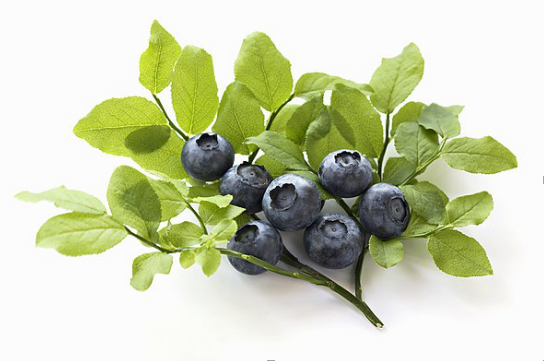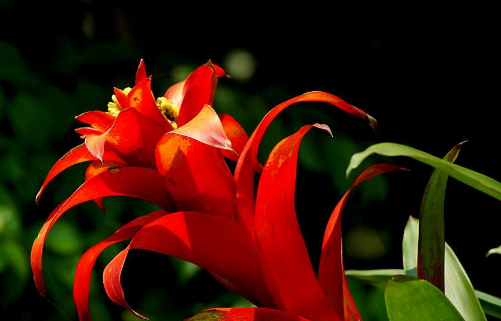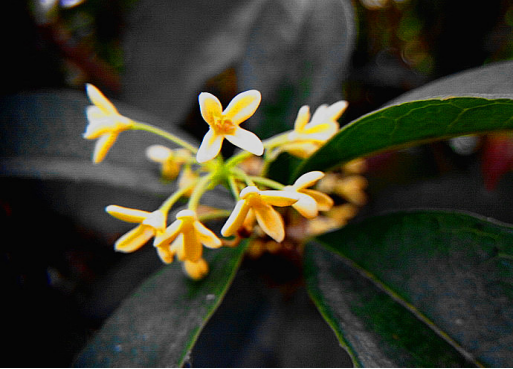Propagation of blueberries
Cuttings are the main propagation method of blueberries, and the following points should be noted when cutting:
I. Selection of cuttings
Cutting in the spring bud, suitable for the selection of strong growth and no pests 1-2 years old branches, cutting should try to choose the middle and lower parts of the branch, cutting length of about 30 cm.
II. Cutting medium
Can use rotten moss and grass carbon plus river sand mixed preparation, but do not add base fertilizer, cuttage before the substrate needs to be watered but not ponding, cuttage container should be slightly deeper.

III. Cutting
Miter the ends of the cuttings with a sharp blade and insert them vertically into the medium, exposing only one terminal bud, then spray water once. Cuttage distance should not be less than 5 cm in general, because too dense cuttings easily cause poor seedling development after rooting.
IV. Management after cuttage
1. Water management
After cuttage, we should always keep the soil moist, and at the same time, we should pay attention to avoid water in the soil, otherwise it will lead to blueberry rot. May to June is the critical period of water management, at this time although the leaves have been expanded, but the cuttings have not taken root, water shortage easily leads to cuttings death.
2. Fertilizer management
No fertilizer should be applied to cuttings before they take root. Fertilization can be applied to promote plant growth after they take root. Fertilization should be applied in liquid form once a week. After fertilization, water should be sprayed in time to wash off the residual fertilizer on the leaves and avoid damaging the leaves.
After reading the introduction of Xiaobian, do you also want to plant a pot of blueberry bonsai at home? Then try it!
How do blueberries reproduce? Cuttage propagation methods and management points of blueberry
Blueberry can be said to be one of the fruits with the most development potential, attracting many farmers to plant. However, to grow blueberries successfully, good blueberry reproduction can be said to be the foundation of the foundation. In fact, blueberry propagation methods are many, there are cuttage, sub-plant, seeding and other propagation methods. However, at present in our country blueberry cultivation, usually adopts the cutting propagation method. So, how do blueberries reproduce? Blueberry cutting propagation methods and post-cutting management points are described as follows.
Photo: Blueberry
1. Preparation of blueberry seedbed
1. Medium selection: river sand, sawdust, peat, rotten moss and so on can be used as cutting medium, but with river sand and sawdust as cutting medium after rooting need to be transplanted, more labor-intensive and affect the development of seedlings. The ideal medium for cuttings was the mixture of moss, peat and river sand (1:1).
2. Seedbed selection: cuttage can be carried out directly in the field, cuttage matrix spread into 1 m wide, 25 cm thick bed, length according to needs, but this method due to low temperature and ground temperature, rooting rate is low, the application of the most and relatively cheap is the wooden structure of the bed, made of wood about 2 m long, 1 m wide, 40 cm high wooden box, wooden box bottom nail has 0.3~0.5 cm mesh hard board. The wooden box is supported off the ground by logs. This method can effectively increase the temperature of the substrate and improve the rooting rate.
Photo: Blueberry
2. Blueberry cutting method
1. Cuttings selection: Cuttings should be cut from trees with strong growth and no diseases and insect pests. It is advisable to select branches with high hardness, good maturity and health. Avoid selecting excessive branches, branches with large pith and branches with freezing injury in winter as much as possible. If virus diseases occur in orchards, the cuttings should be at least 15 cm away from the diseased trees. The cuttings should be 1-year-old vegetative branches. If the cuttings are insufficient, 1-year-old flower buds can be selected. The flower buds should be wiped off during cutting. However, Rooting rate of flower bud branch is often low, and the quality of root system is poor. The position of cuttings on branches also has a significant effect on rooting rate. The rooting rate of branches at the base as cuttings is obviously higher than that of upper branches as cuttings, whether it is vegetative branches or flower bud branches. Therefore, the middle and lower parts of branches should be selected as far as possible for cutting.
2. Cutting time: When the number of seedlings is small, cutting is carried out before spring germination (generally 3~4 months), cutting and transplanting can be omitted, but cutting is required in advance when a large number of seedlings are cultivated. Generally, it takes 800~1000 hours of cold temperature for branch germination. Therefore, cutting time should ensure that branches have sufficient cold temperature accumulation. Generally speaking, February is more appropriate.
Photo: Blueberry
3. Cutting: Cutting tools should be sharp, the incision should be smooth, the length of cutting is generally 8~10 cm, the upper incision is flat cut, the lower incision is oblique cut, and the lower incision is just under the bud, which can improve the rooting rate. After cutting, every 50~100 roots are bundled and temporarily buried with wet river sand.
4. Cutting method: After everything is ready, the substrate is watered to ensure humidity but no ponding, and then the cuttings are inserted vertically into the substrate, only one terminal bud is exposed, the distance is 5×5 cm, the cuttings are not too dense, too dense is caused by poor seedling development after rooting, and the second is easy to cause bacterial infection, so that the cuttings or seedlings rot. Highbush blueberry hardwood cuttings generally do not need to be treated with rooting agents, many rooting agents on hardwood cuttings little or no effect.
Photo: Blueberry
III. Post-insertion management of blueberries
1. Water management: After cutting, water should be frequently watered to maintain soil moisture, but too much or too little watering should be avoided. Put in the sun for too long, when the water temperature is high, wait for the water temperature to cool down and then pour, so as not to hurt the seedlings. The most critical period of water management is from early May to late June, when the leaves have spread, but the cuttings have not yet taken root, and insufficient water easily causes cuttings death. When the top leaves begin to turn green, it marks the beginning of rooting.
2. Fertilizer management: do not apply any fertilizer in the matrix before cuttage, and do not apply fertilizer before rooting after cuttage. Fertilizers are applied after the cuttings have taken root to promote seedling growth. Fertilization should be applied in liquid form, with 13-26-13 or 15-30-4 complete fertilizer, concentration of about 3%, once a week, spray water after each fertilization, will wash off the fertilizer on the leaves, so as not to damage the leaves.
Photo: Blueberry
3. Transplanting method: Rooted seedlings generally overwinter in the seedbed, can also be transplanted in September tending, if rooted seedlings overwinter in the seedbed, before winter on both sides of the seedbed should be cultivated soil.
4. Pest management: During rooting and seedling raising, ventilation and disease-removing methods are mainly used to control diseases. Greenhouse or greenhouse seedlings should be ventilated in time to reduce fungal diseases and reduce temperature.
Cuttage propagation has the characteristics of simple and easy operation, convenient management and fast growth, and is one of the most important propagation methods in blueberry cultivation and production. In the above, we introduced the blueberry cutting propagation method and the key points of post-insertion management. Have you learned it?
Cuttage propagation method and seedling management of blueberry
Blueberry propagation methods are many, such as cuttings, seedlings, ramets, etc. At present, blueberry cultivation in China is usually based on cutting propagation methods, other methods such as seed seedling, rhizome cuttings, ramets and so on are also applied, propagation methods vary according to species, high bush blueberry mainly adopts hardwood cuttings, rabbit eye blueberry adopts green branch cuttings, short bush blueberry green branch cuttings and hardwood cuttings can be used, hardwood cuttings are mainly used in high bush blueberry, but because of different varieties, rooting difficulty is different, Such as blue line, Lubel, Jersey hardwood cuttings take root easily, but blue abundant root is difficult.
Blueberry seedbed preparation
1. Substrate selection: River sand, sawdust, peat, rotten moss and so on can be used as cutting substrate, but with river sand and sawdust as cutting substrate after rooting needs to be transplanted, more labor-intensive and affect seedling development. The ideal medium for cuttings was the mixture of moss, peat and river sand (1:1).
2, seedbed selection: cuttage can be carried out directly in the field, cuttage matrix spread into 1 meter wide, 25 cm thick bed, length according to needs, but this method due to low temperature and ground temperature, rooting rate is low, the most applied and relatively cheap is the wooden structure of the bed, made of wood about 2 meters long, 1 meter wide, 40 cm high wooden box, wooden box bottom nail has 0.3~0.5 cm mesh hard board. The wooden box is supported off the ground by logs. This method can effectively increase the temperature of the substrate and improve the rooting rate.
Blueberry cutting method
1. Cutting selection: Cuttings should be cut from trees with strong growth and no diseases and insect pests. It is advisable to select branches with high hardness, good maturity and health. Avoid selecting excessive branches, branches with large pith and branches with freezing injury in winter as much as possible. If virus diseases occur in orchards, the cuttings should be at least 15 cm away from the diseased trees. The cuttings should be 1-year-old vegetative branches. If the cuttings are insufficient, 1-year-old flower buds can be selected. The flower buds should be wiped off during cutting. However, The rooting rate of flower bud branch is often low, and the quality of root system is poor. The position of cuttings on branches also has a significant effect on rooting rate. The rooting rate of the base of branches as cuttings is obviously higher than that of the upper branches, whether it is vegetative branches or flower bud branches. Therefore, the middle and lower parts of branches should be selected as far as possible for cuttings.
2. Cutting time: When the number of seedlings is small, cutting is carried out before spring germination (usually 3~4 months), cutting is inserted with cutting, cutting storage can be omitted, but cutting is required in advance when a large number of seedlings are cultivated. Generally, it takes 800~1000 hours of cold temperature for branch germination. Therefore, the cutting time should ensure that the branches have sufficient cold temperature accumulation. Generally speaking, February is more appropriate.
3, cutting cuttings: cutting cutting tools to be sharp, smooth incision, cutting length is generally 8~10 cm, the upper incision for flat cut, the lower incision for oblique cut, under the incision is located under the bud, so as to improve the rooting rate. After cutting, every 50~100 roots are bundled and temporarily buried with wet river sand.
4, cuttage method: all ready, the substrate irrigation water to ensure humidity but not water, and then the cuttings vertically inserted into the substrate, only exposed a terminal bud, distance by 5×5 cm, cuttage do not be too dense, too dense is caused by poor seedling development after rooting, the second is easy to cause bacterial infection, so that cuttings or seedlings rot. Highbush blueberry hardwood cuttings generally do not need to be treated with rooting agents, many rooting agents on hardwood cuttings little or no effect.
Blueberry post-insertion management
1, water management: after cutting should be watered frequently to maintain soil moisture, but should avoid too much watering or too little watering. Put in the sun for too long, when the water temperature is high, wait for the water temperature to cool down and then pour, so as not to hurt the seedlings. The most critical period of water management is from early May to late June, when the leaves have spread, but the cuttings have not yet taken root, and insufficient water easily causes cuttings death. When the top leaves begin to turn green, it marks the beginning of rooting.
2, fertilizer management: do not apply any fertilizer in the matrix before cuttage, and do not apply fertilizer before rooting after cuttage. Fertilizers are applied after the cuttings have taken root to promote seedling growth. Fertilization should be applied in liquid form, with 13-26-13 or 15-30-4 complete fertilizer, concentration of about 3%, once a week, spray water after each fertilization, will wash off the fertilizer on the leaves, so as not to damage the leaves.
3. Transplanting method: Rooted seedlings generally overwinter on the seedbed, and can also be transplanted and nurtured in September. If rooted seedlings overwinter in the seedbed, soil should be cultivated on both sides of the seedbed before winter.
4. Pest management: ventilation and disease removal methods are mainly used to control diseases during rooting and seedling raising. Greenhouse or greenhouse seedlings should be ventilated in time to reduce fungal diseases and reduce temperature.
- Prev

Ramet propagation of torch flower
Torch pot planting for three years, a clump can produce more than a dozen bad buds, too much production causes crowding, poor ventilation, need to split in time. Ramet propagation is generally better in autumn, when the flowering period of the plant has passed. The whole plant can be dug out of the soil.
- Next

Matters needing attention in the maintenance of four seasons osmanthus
1. Planting time should be chosen in spring or autumn, especially on cloudy or rainy days in these two seasons. two。 The growing environment should be warm, well-ventilated, well-lit or semi-overcast. 3. When transplanting, the soil ball at the root must be hit well to ensure its survival rate.
Related
- Fuxing push coffee new agricultural production and marketing class: lack of small-scale processing plants
- Jujube rice field leisure farm deep ploughing Yilan for five years to create a space for organic food and play
- Nongyu Farm-A trial of organic papaya for brave women with advanced technology
- Four points for attention in the prevention and control of diseases and insect pests of edible fungi
- How to add nutrient solution to Edible Fungi
- Is there any good way to control edible fungus mites?
- Open Inoculation Technology of Edible Fungi
- Is there any clever way to use fertilizer for edible fungus in winter?
- What agents are used to kill the pathogens of edible fungi in the mushroom shed?
- Rapid drying of Edible Fungi

